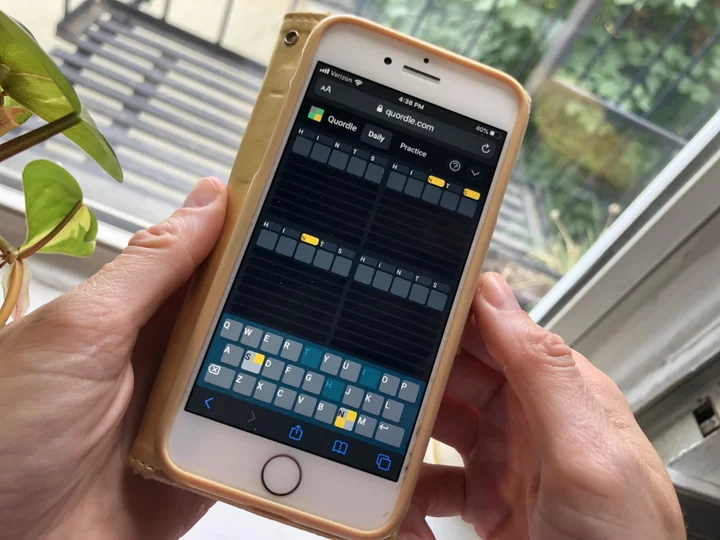
Completion of New Production Building at Murata Manufacturing Vietnam
KYOTO, Japan--(BUSINESS WIRE)--Aug 29, 2023--
2023-08-30 10:59

Adolis Garcia adds insult to injury for Cardinals with another MLB record
Texas Rangers star Adolis Garcia added insult to injury for the St. Louis Cardinals as he tied the record for most postseason RBIs held by David Freese.
2023-10-28 08:51

Nationals vs. Mets rain delay: Weather updates, restart time for Mets game today
The game between the Nationals and Mets on July 27 was thrown into a delay with the bases loaded. Check here for updates on the Mets rain delay.The Nationals and Mets almost made it through Thursday's game without weather getting in the way. But almost only counts in horseshoes and hand gre...
2023-07-28 10:16

YouTubers Shane Dawson and husband Ryland Adams expecting twins via surrogate: 'A surreal experience'
'This is a moment that we’ve been waiting for forever and I can’t believe it's happening,' said Shane Dawson
2023-07-09 04:27

Davido's twins: Afrobeats star describes having 'beautiful' babies a year after son's death
The Afrobeats megastar opens up about the aftermath of his three-year-old son's tragic death
2023-10-16 01:47

'Quordle' today: Here are the answers and hints for August 12, 2023
If Quordle is a little too challenging today, you've come to the right place for
2023-08-12 07:18

Belarus leader welcomes Wagner boss Prigozhin into exile
Yevgeny Prigozhin, who led a Russian mutiny, arrives in Belarus and his men are offered a military base.
2023-06-28 03:52

Max Verstappen’s season and overall record in numbers following world title win
Max Verstappen clinched the Formula One world drivers’ title after finishing second in the sprint race at the Qatar Grand Prix. Here, the PA news agency looks at the Dutchman’s season and overall record in numbers. 3 – Verstappen has wrapped up his third world title. 11 – he is the 11th driver to win the title three times or more, and only the fifth to do so in successive years. 10 – along the way Verstappen produced a record-breaking run of 10 consecutive race wins, from the Miami Grand Prix in May to September’s Italian GP. 13 – his overall win tally this season, from 16 races. He has finished second twice, and fifth in Singapore. 407 – Verstappen’s points tally. 184 – lead over second-placed Red Bull team-mate Sergio Perez. 10 – pole positions. 7 – fastest laps. 2 – sprint race wins. 48 – Verstappen’s career win total ranks fifth in F1 history. He has the chance to climb to fourth or even third by the end of the season, with Alain Prost winning 51 races and Sebastian Vettel 53. 6 – clinching the title in the Qatar sprint race means Verstappen did so with six grands prix remaining, equalling Michael Schumacher’s record from 2002. Read More Angry Lance Stroll shoves personal trainer and storms out of interview Max Verstappen fastest in Qatar practice as he closes in on world championship Fernando Alonso lauds Max Verstappen as best F1 driver since Michael Schumacher Fernando Alonso lauds Max Verstappen as best F1 driver since Michael Schumacher Max Verstappen’s best moments as he wins 2023 F1 world title Max Verstappen seals 2023 F1 world championship in Qatar
2023-10-08 03:00

Neal, Hishaw showcase Kansas run game, Jayhawks run over UCF, 51-22
Devin Neal rushed for 154 yards on just 12 carries and Daniel Hishaw ran for another 134 yards and two touchdowns as Kansas dominated UCF 51-22 in a Big 12 Conference battle
2023-10-08 07:49

TikTok influencer 'Narco Queen' shot dead in broad daylight
A 24-year-old “narco influencer” with hundreds of thousands of social media followers has reportedly been shot dead in broad daylight. At least two hitmen opened fire on Sabrina Durán Montero as she sat in a car in Padre Hurtado, Chile, on Tuesday morning (24 October). The killers made off with the vehicle, which was later found burnt out about half an hour’s drive away in Quilicura. Sabrina was rushed to a local hospital with at least eight gunshot wounds. Medics were tragically unable to save her life. Local media say she was a notorious local drug trafficker who went by the alias “La Ina”. Police believe her killing may have been a settling of scores by a rival gang. Police chief Leonel Muñoz stated on Tuesday that Sabrina “had a criminal record, specifically for receiving stolen vehicles and drug trafficking, and had been released from serving a sentence approximately a month ago”. She was reportedly on parole at the time of her death. Her final TikTok was shared to her 575,000 followers just 4 days ago. @katrinagusman ???antonella marchant?????nooo k rikos sus aroma no a mi me encanto todo todo ????#@Morales Chanel ??sigan la y compren sus productos ???? Sabrina and her two brothers were arrested at the beginning of 2023 on suspicion of supplying, distributing and trafficking cannabis, cocaine, MDMA, and magic mushrooms. During her time behind bars, she reportedly began a same-sex relationship with her cellmate, Antonella Marchant. Antonella, leader of the notorious Los Marchant clan, was sentenced to 15 years in prison after her arrest in 2021. At the time of writing, Sabrina had 431,000 followers on TikTok, where she also went by the names Katrina Gusman and Juakina Gusman. Many of her selfie videos have been watched millions of times. The hitmen were still at large at the time of reporting. The investigation continues. How to join the indy100's free WhatsApp channel Sign up to our free Indy100 weekly newsletter Have your say in our news democracy. Click the upvote icon at the top of the page to help raise this article through the indy100 rankings.
2023-10-28 23:59

What the Phoenix Suns starting lineup looks like after keeping DeAndre Ayton
Despite trade rumors suggesting the opposite, the Suns will keep center DeAndre Ayton.According to Chris Haynes, the Suns are keeping Deandre Ayton. This comes after a Suns insider said that the team is unlikely to trade for Ayton due to the offers being extremely low.The Suns'...
2023-06-26 00:57

5 most watched IRL streamers on Kick every gamer should follow
These streamers have harnessed the unique features and opportunities offered by Kick to excel in their content creation and engage with their audience
2023-05-21 18:58
You Might Like...

US Senator Joe Manchin says 'thinking seriously' about leaving Democratic Party

'I tried to kill everybody': Off-duty pilot Joseph Emerson who tried to shut down plane's engines thought it was a dream

Seeking asylum and work, migrants bused out of NYC find hostility

Maryland looks to bounce back against Northwestern after week off following back to back losses

Mexican carrier Volaris sees Pratt & Whitney inspection agreement in next month

Tennis-Racist abuse of players is getting worse, says Stephens

What to know ahead of Tory Lanez's sentencing in Megan Thee Stallion's shooting

Fonterra's profit more than doubles on strong demand for dairy ingredients
